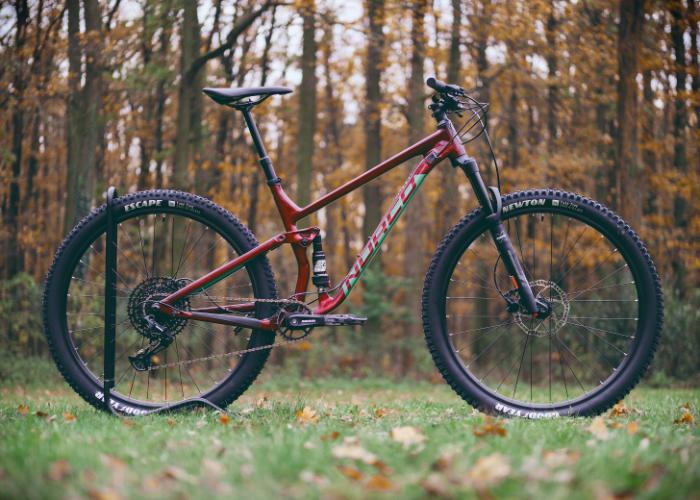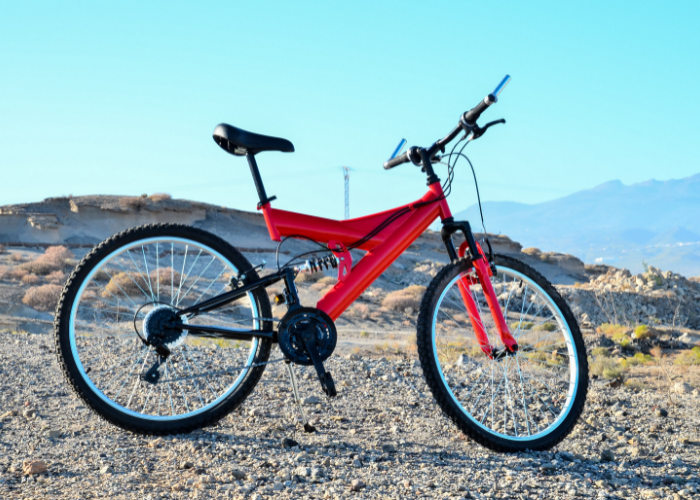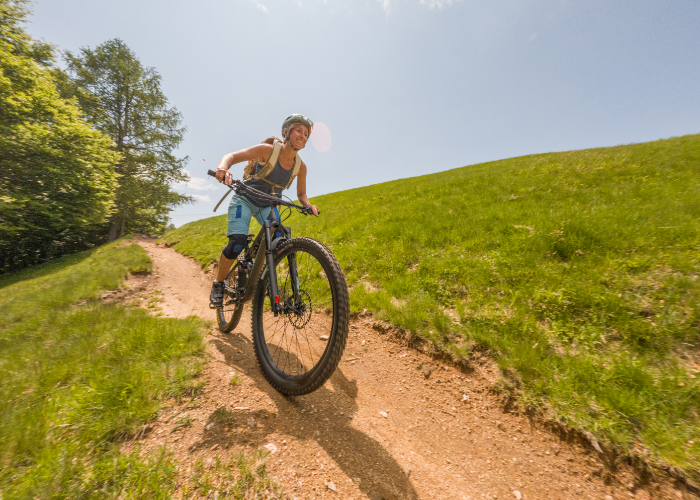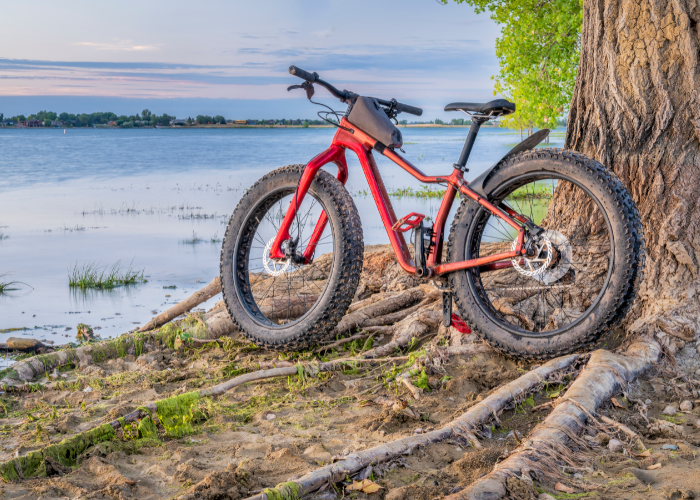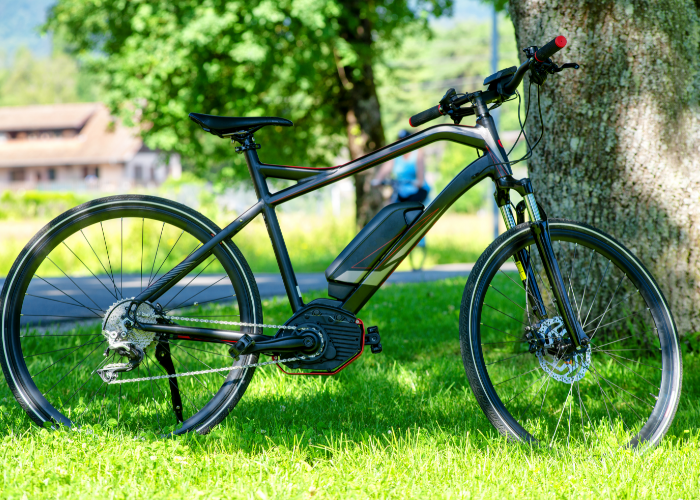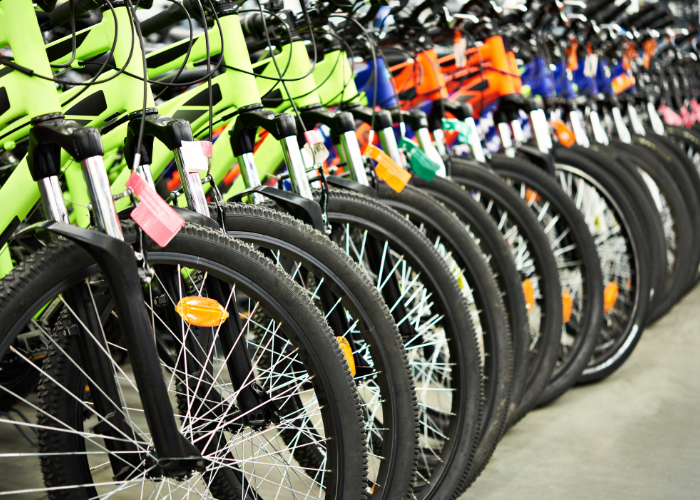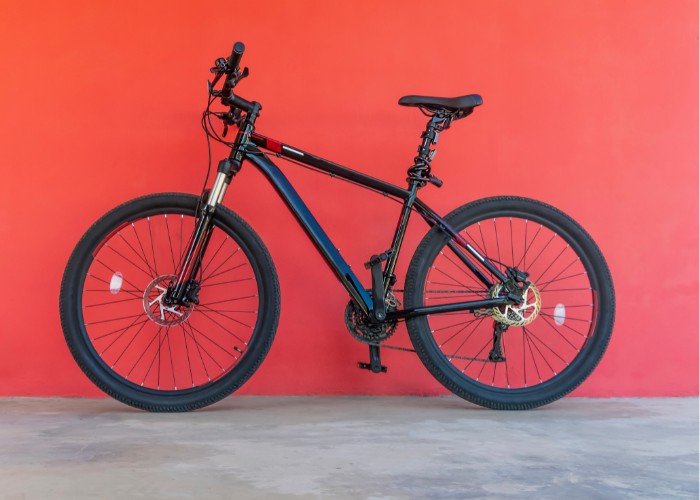Ready to hit the trails but not sure which mountain bike is perfect for your adventures?
With a plethora of options available, choosing the ideal mountain bike can be overwhelming. But fear not!
This comprehensive guide will walk you through the various types of mountain bikes, their features, and how to find the perfect fit for your riding style and budget.
Understanding Mountain Bike Suspension
Suspension plays a crucial role in mountain biking, as it helps absorb the shock from bumps and obstacles on the trail, making it easier to control the bike and providing a more comfortable ride for the rider. There are three key groups of mountain bikes based on suspension: rigid, hardtail, and full suspension.
Let’s dive deeper into each group and discover how they differ in their ability to tackle various terrains.
Rigid Mountain Bikes
Rigid mountain bikes are the simplest of the bunch, lacking any suspension.
While they’re better for off-roading compared to gravel or hybrid bikes, the absence of shock absorption can make for a bumpy ride. Typically equipped with rim brakes, these bikes are the most budget-friendly option for those seeking a no-frills, off-road experience.
Rigid modern mountain bikes are a great choice for those who want to explore off-road.
Hardtail Mountain Bikes
Hardtail mountain bikes feature:
- Front suspension only, providing improved handling on rough terrain compared to their rigid counterparts
- A popular choice for casual cross-country riding
- Lighter weight and responsive handling, making them great for climbing.
However, they may not be the best option for steep downhill terrain, where more suspension is needed for stability and control. Trail bikes, a type of hardtail mountain bike, strike a balance between climbing efficiency and downhill performance. With a suspension range of 120mm to 150mm, they can handle:
- small to medium jumps or drops
- technical sections
- rough terrain
- obstacles
However, they may struggle with larger features.
High-end trail bikes typically come with a dropper post for added versatility, and wider tires provide better stability and control when going downhill.
Full Suspension Mountain Bikes
Full suspension mountain bikes:
- Equipped with both front and rear suspension
- Offer a smoother ride by absorbing the shock of bumpy terrain
- Provide better control and comfort on challenging trails
- Tend to be more expensive and heavier compared to hardtail or rigid mountain bikes
- Uphill riding can be more challenging due to their additional weight
Ideal for technical trails and high-speed descents, full suspension bikes are not the best choice for beginner riders, as they require more skill and experience to handle effectively.
Nevertheless, for those seeking a bike that can conquer rough terrain and provide a comfortable ride, a full suspension mountain bike may be the perfect fit.
Mountain Bike Categories and Their Purposes
Mountain biking has evolved over the years, giving birth to various riding styles and specialized bikes to suit each one. Some of the different riding styles and specialized bikes include:
- Cross country biking
- Trail biking
- Enduro racing
- Downhill racing
There’s a mountain bike designed for every type of rider and terrain.
In this section, we’ll explore the different categories of mountain bikes and help you determine which one aligns best with your riding style and goals.
Cross Country Bikes
Cross country mountain bikes, available in both hardtail and full suspension models, are designed for speed, efficiency, and conquering climbs. With 80-120mm of suspension travel, these bikes are lightweight and agile, making them perfect for tackling uphill sections and maintaining speed on flat terrain.
However, they may not be the best choice for aggressive downhill sections, where more suspension and stability are needed for a smoother and safer ride.
Modern cross country bikes come equipped with small rotors and four-piston brake calipers, as well as remote lock-out switches and dropper seat posts with shorter drop lengths than other types of mountain bikes. These features allow for quick adjustments and adaptability on the trail, making cross country bikes ideal for riders seeking speed and versatility in their mountain biking experience.
Trail Bikes
Trail bikes are the versatile all-rounders of the mountain bike world, suitable for a variety of terrains and skill levels. Balancing climbing efficiency and downhill performance, these bikes are equipped with a dropper seat post, wide handlebars, and aggressive tread patterns for added stability and control.
With a suspension travel range of 120-150mm and a head-tube angle between 65-68°, trail bikes can handle technical terrain like red or black-graded singletrack with ease.
Whether you’re a beginner or an experienced rider, trail bikes offer a balanced and versatile ride that can adapt to various trail conditions and riding styles. As a result, they’re a popular choice for those looking to invest in a single mountain bike that can tackle a wide range of adventures.
Enduro Bikes
Enduro bikes, also known as all-mountain bikes, are designed for aggressive downhill riding and rough terrain. With a slacker head-tube angle and plenty of suspension travel, these bikes excel at high-speed descents and technical trails.
However, their heavier weight and reduced agility compared to cross country or trail bikes can make them more challenging to maneuver in tight spaces and less efficient on long, flat routes.
If you’re an adrenaline junkie seeking a bike built to conquer steep, technical terrain and exhilarating downhill sections, an enduro bike may be the perfect choice for you. Just be prepared to put in a bit of extra effort when tackling uphill climbs and flat terrain.
Downhill Bikes
Downhill bikes, also known as freeride bikes, are designed for high-speed descents and extreme trail conditions. They feature:
- The most front suspension travel among mountain bike types
- Not meant to be pedaled uphill, but rather taken up by car, chairlift, or on foot
- Equipped with a 7-speed drivetrain
- An extreme saddle design for use as a steering aid
These bikes are built to provide thrilling downhill performance at the expense of uphill efficiency.
If you live for big descents, gnarly terrain, and technical trail features like big drops, double jumps, and rock gardens, a downhill bike could be the perfect fit for your riding style. Just be prepared to invest in a bike with a specialized design tailored for downhill speed and performance.
Fat Bikes
Fat bikes are a unique breed of mountain bikes, featuring wide tires ranging from 3.7 to 5 inches or more. This extra width allows fat bikes to excel on snow, sand, or rocky terrain, providing exceptional grip and stability in challenging conditions.
Available in both full suspension and hardtail models, fat bikes offer a fun and versatile option for riders seeking to tackle a variety of terrains and conditions.
Single-Speed Bikes
Single-speed mountain bikes offer simplicity and lower maintenance, featuring only one gear ratio. While they’re lightweight and budget-friendly compared to other mountain bikes, riding a single-speed bike requires more effort on varied terrain due to the lack of multiple gears to assist the rider.
Best suited for flat or rolling terrain, single-speed mountain bikes are ideal for riders seeking a no-frills, low-maintenance bike that focuses on the essentials of off-road riding.
Electric Mountain Bikes
Electric mountain bikes, or pedal-assist mountain bikes, provide riders with a boost to their pedaling efforts, allowing them to ride faster and further without as much fatigue. Perfect for tackling mountainous terrain with no shuttle service or for group rides where riders have mixed fitness levels, electric mountain bikes are also a great option for those recovering from an injury or illness.
With varying levels of pedal assistance and more affordable options available over time, electric mountain bikes are becoming an increasingly popular choice for riders seeking a little extra help on the trails.
Wheel Sizes and Their Impact on Performance
The size of your mountain bike’s wheels can significantly impact its handling and stability on the trails. From the traditional 26-inch wheels to the popular 27.5-inch and 29-inch options, different wheel sizes offer varying levels of agility, stability, and traction to suit your riding preferences and needs.
In this section, we’ll compare the benefits and drawbacks of popular mountain bike wheel sizes and help you determine which one is right for you.
27.5-inch Wheels
27.5-inch wheels, also known as 650b, provide a good mix of agility and stability for mountain biking. These wheels are great for:
- Tight turns
- Technical terrain
- Quick acceleration
- A smoother ride than their 26-inch counterparts
However, they may not be as efficient or stable as 29-inch wheels when it comes to tackling long, flat routes or high-speed descents. That being said, the versatility of 27.5-inch wheels makes them a popular choice for riders seeking a balanced mountain bike experience.
29-inch Wheels
29-inch wheels, or 29ers, are known for their stability and better rollover capabilities, making them ideal for tackling high-speed descents and rough terrain. Providing a smoother ride and better traction and control, 29-inch wheels are a popular choice for everyday trail riding or downhill racing.
However, their larger size can make them heavier and more challenging to maneuver in tight spaces, as well as requiring more effort to accelerate compared to smaller wheel sizes.
Mixed Wheel Sizes
Mixed wheel sizes, or “mullet” bikes, combine the best of both worlds by using a larger wheel in the front and a smaller wheel in the back, such as a 29-inch front wheel and a 27.5-inch rear wheel. This combination offers improved handling and performance, as the bigger front wheel provides increased stability and grip, while the smaller rear wheel allows for greater agility and control.
As a result, mixed wheel sizes are becoming an increasingly popular choice for riders seeking to optimize their mountain bike’s handling and performance on varied terrain.
Mountain Bike Frame Materials
The material used in your mountain bike’s frame can greatly influence its price, weight, and durability. From aluminum and carbon fiber to steel and titanium, each material has its own unique properties that can affect the ride quality and performance of your mountain bike.
In this section, we’ll analyze the benefits and drawbacks of different frame materials and help you determine which one is the best fit for your needs and budget.
Aluminum Frames
Aluminum frames are a popular choice for mountain bikes due to their affordability, strength, and lightweight construction. However, their stiffness can make them less comfortable on rough terrain as they don’t absorb vibrations as well as other materials. Despite this drawback, aluminum frames remain a great option for riders of all levels seeking a budget-friendly, durable, and stable mountain bike.
Aluminum frames are a great choice for those looking for a reliable and affordable mountain bike.
Carbon Fiber Frames
Carbon fiber frames offer a lighter and more compliant ride compared to aluminum frames, providing a smoother and more comfortable experience on the trails. These frames are also strong and have an impressive strength-to-weight ratio, making them a popular choice for high-performance mountain bikes.
However, carbon fiber frames can be more expensive and require careful maintenance to prevent catastrophic failure. If you’re willing to invest in a high-quality frame and take the necessary precautions to maintain it, a carbon fiber frame can provide a top-notch riding experience.
Steel and Titanium Frames
Steel and titanium frames are often found in boutique bike brands and offer unique ride qualities and durability. Steel frames are more reliable and provide a better blend of ride characteristics and comfort, though they are heavier and more prone to rusting compared to other materials.
Titanium frames, on the other hand, are lighter and more resistant to corrosion and fatigue, offering a smooth and responsive ride. While steel and titanium frames can be more expensive than aluminum frames, their durability and distinctive ride qualities make them a worthwhile investment for discerning riders seeking a unique and long-lasting mountain bike.
Choosing the Right Mountain Bike for You
Now that you’re familiar with the various types of mountain bikes, their features, and the impact of wheel sizes and frame materials on performance, it’s time to narrow down your options and find the perfect mountain bike for you.
In this section, we’ll offer some tips and advice to help you make an informed decision based on your individual preferences, riding style, and budget.
Assess Your Riding Style and Goals
To choose the right mountain bike, start by considering your riding style and goals. Are you into cross country racing, tackling technical terrain, or simply enjoying leisurely trail rides? Identifying your preferred type of mountain biking will help you determine which features and bike category are most important to you.
For example, if you prioritize speed and efficiency, a cross country bike may be the best fit, whereas if you’re seeking a versatile all-rounder, a trail bike could be the perfect choice.
Test Ride Different Bikes
One of the best ways to find the perfect mountain bike is to test ride various models at bike shops, demo events, and showrooms. This allows you to get a feel for the bike’s handling and performance on the trails and make any necessary adjustments to ensure it suits your riding style.
Treat the demo bike as if it were your own and take the time to assess its fit, comfort, and overall ride quality before making a decision.
Consider Your Budget
Finally, set a realistic budget for your mountain bike purchase, factoring in potential upgrades and accessories like helmets, lights, locks, and protective gear. Mountain bikes can range from entry-level models priced at $400 to $800 to high-end options costing $5,000 or more.
By considering your budget alongside your riding style and preferences, you can find the perfect mountain bike that meets your needs without breaking the bank.
Summary
Choosing the right mountain bike can be a daunting task, but with a clear understanding of the various types, features, and factors to consider, you can confidently find the perfect bike for your riding style and budget. Whether you’re seeking a lightweight cross country racer, a versatile trail bike, or a downhill speed machine, there’s a mountain bike out there waiting for you to conquer the trails. So gear up, hit the dirt, and unleash your inner mountain biker on the ride of a lifetime.

